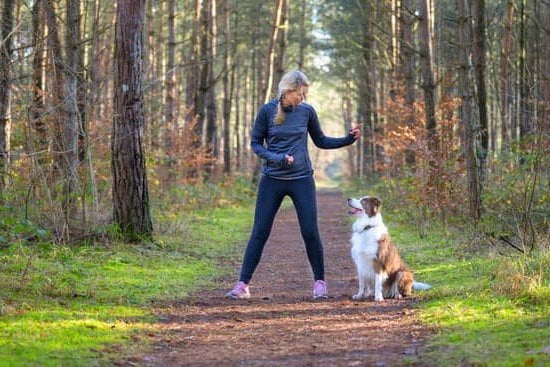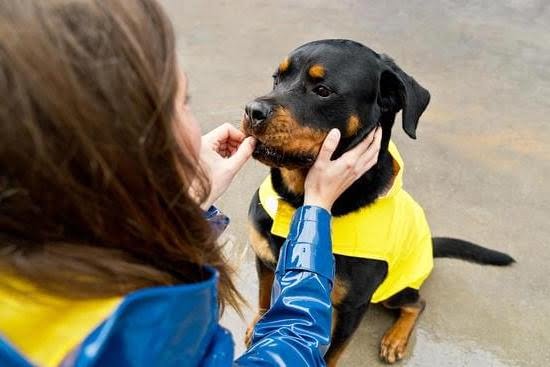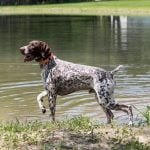Are you wondering how to train your dog to find a specific toy? Teaching your furry friend this skill can be both fun and practical. Whether it’s for entertainment or for helping to locate lost items, training your dog to find a specific toy can strengthen the bond between you and your pet while also providing mental stimulation. In this article, we will explore the essential steps and techniques to successfully train your dog in this specialized task.
Training your dog to find a specific toy starts with choosing the right equipment and understanding the importance of this skill. Selecting an appropriate toy that suits your dog’s interests and preferences is crucial for successful training. Additionally, building a strong foundation with basic commands and obedience lays the groundwork for more advanced training in toy retrieval.
As we delve into the various stages of training, we will discuss the introduction of the scent of the specific toy and how positive reinforcement plays a key role in motivating and rewarding your dog during training sessions. Furthermore, we will highlight the gradual training process that breaks down the task into manageable steps for your dog’s understanding.
By implementing consistent practice and addressing common challenges along the way, you can ultimately take your dog’s skills in finding a specific toy to an advanced level. Stay tuned as we guide you through each step of this rewarding journey towards enhancing your bond with your canine companion.
Choosing the Right Toy
When selecting a toy for training purposes, choose one that stands out from your dog’s other toys. This will help prevent confusion during the training process and make it easier for your dog to identify the specific toy you want them to find. Bright colors or unique shapes can make a toy more distinguishable for your dog.
In addition to visual appeal, the scent of the toy is a critical factor in training your dog to find it. Choose a toy with a distinct smell that your dog can easily detect. For example, some toys are designed with compartments where you can place treats or attractant scents that will encourage your dog to engage with the toy. Considering these factors when choosing a toy will set the stage for successful training sessions.
| Aspect | Considerations |
|---|---|
| Visual Appeal | Bright colors or unique shapes |
| Scent | Distinct smell easily detectable by dogs |
| Durability | Able to withstand regular use |
Building a Strong Foundation
Establishing obedience with your dog also involves building trust and communication. This can be achieved through positive reinforcement, consistency, and patience. Dogs thrive in environments where they feel secure and understand what is expected of them. By creating a strong bond built on trust and clear communication, your dog will be more receptive to learning new tasks, including finding a specific toy based on scent.
In addition to basic commands, incorporating leash training and proper socialization can contribute to laying a strong foundation for your dog’s overall behavior. A well-behaved and socially-adjusted dog will be more focused and cooperative during training sessions, making the process of teaching them to find a specific toy much smoother.
| Key Points | Data |
|---|---|
| Basic Commands | Commands such as “sit,” “stay,” “come,” and “leave it” are essential for establishing obedience. |
| Trust and Communication | Building trust and clear communication with your dog is crucial for successful training. |
| Socialization | Incorporating proper socialization contributes to overall good behavior in dogs. |
Introducing the Scent
Understanding the Importance of Scent Introduction
Introducing a specific scent to your dog is a crucial step in training them to find a specific toy. Dogs have an incredible sense of smell, and associating a particular scent with a toy can help them understand what they are looking for during the training process. By familiarizing your dog with the scent of the specific toy, you are essentially teaching them to use their sense of smell to locate the desired item.
Gradual Introduction of Scent
When introducing the scent of the specific toy to your dog, it’s important to take a gradual approach. Start by allowing your dog to sniff and become acquainted with the toy without any pressure. You can even incorporate playtime with the toy to create positive associations with its scent. As your dog becomes more comfortable with the scent, you can begin incorporating simple commands such as “find it” or “search” while presenting the toy.
Utilizing Positive Reinforcement
As with any training technique, using positive reinforcement is essential when familiarizing your dog with the scent of a specific toy. Each time your dog shows interest in or successfully retrieves the toy based on its scent, be sure to reward them with praise, treats, or playtime. This positive reinforcement will encourage your dog to continue associating the scent with a positive outcome and will ultimately reinforce their ability to find the specific toy during training sessions.
Using Positive Reinforcement
Training your dog to find a specific toy can be a fun and rewarding experience for both you and your furry friend. One of the key elements in this training process is using positive reinforcement to encourage and motivate your dog. By associating the act of finding the specific toy with positive rewards, you can effectively teach your dog to perform this desirable behavior.
Here are some ways to use positive reinforcement during training sessions:
- Treats: Use small, tasty treats that your dog loves as a reward for successfully finding the specific toy. Offer the treat immediately after your dog has completed the task to reinforce the behavior.
- Verbal praise: Dogs respond well to verbal praise and encouragement. Use a cheerful tone of voice and give your dog plenty of praise when they find the toy.
- Playtime: For many dogs, playtime with their favorite toy is a highly motivating reward. After finding the specific toy as part of their training, engage in a short play session with them using their favorite toy as a form of positive reinforcement.
It’s important to remember that consistency is key when using positive reinforcement. Make sure to reward your dog every time they successfully find the specific toy during training sessions, even if it means starting with simple searches at first. Over time, you can gradually reduce the frequency of rewards as your dog becomes more skilled at finding the toy on command.
Gradual Training Process
Training your dog to find a specific toy requires patience, consistency, and a gradual training process. Breaking down the training into manageable steps is essential to ensure that your dog understands and learns the task effectively. Rushing through the training process can lead to confusion and frustration for both you and your furry companion. By taking it slow and focusing on one step at a time, you can set your dog up for success in finding the specific toy.
The first step in the gradual training process is to introduce your dog to the toy without any expectations. Allow your dog to explore the toy at their own pace, sniffing and inspecting it to become familiar with its appearance and texture. This step helps your dog form a positive association with the toy before moving on to the next phase of training.
Once your dog has become comfortable with the toy, it’s time to introduce basic commands such as “fetch” or “find.” Start by placing the toy within reach of your dog and using verbal cues to encourage them to pick it up or interact with it in some way.
Remember to use positive reinforcement such as treats or praise when your dog shows interest or interacts with the toy as per your command. Gradually increase the distance between your dog and the toy, reinforcing the verbal command each time until they understand what is expected of them.
Practice Makes Perfect
Establish a Routine
Consistency is key when it comes to reinforcing the behavior of your dog in finding a specific toy. Set aside regular training sessions that are short but frequent, ideally 10-15 minutes, to keep your dog engaged and focused. By establishing a routine, your dog will come to anticipate and look forward to these sessions, making them more receptive to learning and practicing their newfound skill.
Utilize Different Locations
To ensure that your dog’s ability to find the specific toy is not limited to just one environment, it’s important to vary the locations where you conduct training sessions. Start indoors where there are minimal distractions, then gradually progress to outdoor areas with more stimuli. This helps generalize the behavior so that your dog can perform the task no matter where they are.
Keep Training Sessions Fun and Interactive
Incorporate elements of play into the training sessions to keep them enjoyable for your dog. Use an enthusiastic tone of voice, incorporate games like hide-and-seek with the toy, or introduce interactive toys that dispense treats as a reward for finding the specific toy. Keeping training sessions fun and engaging will maintain your dog’s interest and motivation throughout the process.
Troubleshooting
Training your dog to find a specific toy can be a fun and rewarding experience, but it can also come with its fair share of challenges. It’s important to be prepared to address common difficulties that may arise during the training process. Here are some common challenges you may encounter and how to troubleshoot them:
1. Lack of interest: If your dog seems uninterested in finding the specific toy, it’s important to reassess the toy you have chosen. Make sure it is something that your dog finds engaging and exciting. Try different types of toys, such as ones with different textures, sounds, or scents until you find one that captures your dog’s attention.
2. Distractions: Dogs can easily get distracted, especially when they are in a new environment or surrounded by other stimuli. To address this challenge, start training in a quiet and familiar setting before gradually introducing distractions. Use positive reinforcement techniques to redirect your dog’s focus back to the task at hand.
3. Difficulty in scent recognition: Some dogs may struggle with identifying or following the scent of the specific toy. In this case, you may need to spend more time familiarizing your dog with the scent before moving on to the retrieval training. You can do this by incorporating the scent into playtime or using treats to associate the scent with positive experiences.
By recognizing and addressing these common challenges during training, you can help set your dog up for success in finding a specific toy. Remember to be patient and consistent in your approach, and always prioritize your dog’s comfort and well-being throughout the training process.
Advanced Strategies
In conclusion, training your dog to find a specific toy can be a fun and rewarding experience for both you and your furry friend. By following the steps outlined in this article, you can build a strong foundation of obedience and establish a bond with your dog through positive reinforcement. Choosing the right toy and familiarizing your dog with its scent are crucial first steps in the training process.
As you progress through the training, it’s important to remain patient and consistent, breaking down the process into manageable steps for your dog. Remember to use positive reinforcement and rewards to motivate your dog during training sessions. Through practice and dedication, you can reinforce the behavior and refine your dog’s skills in toy retrieval.
Additionally, it’s important to anticipate potential challenges and difficulties that may arise during training. By addressing these issues with patience and persistence, you can overcome obstacles and continue making progress with your dog. Finally, as your dog becomes more proficient in finding a specific toy, consider exploring advanced strategies to further refine their skills. With time and dedication, you’ll be amazed at how capable and intelligent dogs can be when trained effectively.
Frequently Asked Questions
How Do I Teach My Dog to Get a Specific Toy?
Teaching your dog to get a specific toy can be done through positive reinforcement and repetition. Start by associating the toy with a command, such as “get your toy,” and then praise and reward your dog when they pick up the specific toy.
You may need to guide them at first, but gradually they will learn to retrieve the designated toy on their own.
How Do I Teach My Dog to Retrieve a Specific Item?
Teaching your dog to retrieve a specific item follows similar principles as teaching them to get a specific toy. Use verbal cues and gestures to indicate which item you want them to retrieve, and reward them when they bring back the correct item. Training sessions should be short and consistent to reinforce the behavior.
How Do You Teach a Dog to Find an Object?
Training a dog to find an object can be incorporated into games such as hide-and-seek or using scent trails. Start by showing the object to your dog, then hide it in an easy-to-find location while giving a command like “find it.”
When your dog locates the object, reward them with praise or treats. Gradually increase the difficulty of hiding spots to challenge their scent tracking abilities.

Welcome to the blog! I am a professional dog trainer and have been working with dogs for many years. In this blog, I will be discussing various topics related to dog training, including tips, tricks, and advice. I hope you find this information helpful and informative. Thanks for reading!





